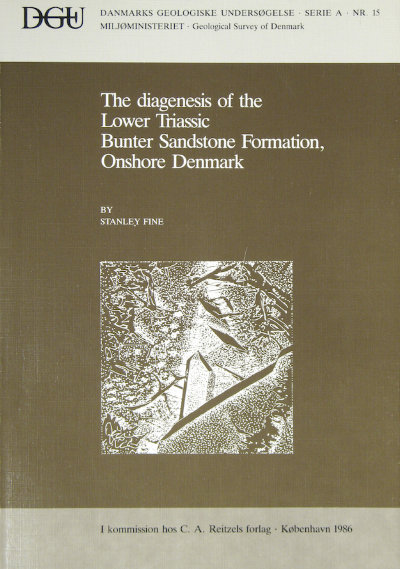The diagenesis of the Lower Triassic Bunter Sandstone Formation, Onshore Denmark
DOI:
https://doi.org/10.34194/seriea.v15.7034Keywords:
Bunter, Sandstone, Diagenesis, Triassic, DenmarkAbstract
The Lower Triassic Bunter Sandstone Formation is a continental redbed sequence deposited under arid to semi-arid conditions in a low-energy, fluviatile-aeolian sabhka environment. The sediments display many diagenetic features in common with modern and ancient redbeds deposited under similar conditions, but local influences on the diagenetic assemblage by factors such as provenance, structural setting and depositional environment can be ascertained. With burial depths of only 1000-2000 meters, effects of compaction are limited, high intergranular porosities remain, and no clear depth-related patterns are noted. The diagenetic assemblage consists of quartz and feldspar overgrowths, Fe-Ti oxides, carbonates (calcite and dolomite), analcime, authigenic clays, anhydrite and halite. The distribution of authigenic minerals is controlled by sedimentary facies, with greater amounts of poikilotopic anhydrite and halite in sandstones and more abundant dolomite and analcime in claystones and heterolithic sands. In addition, the replacement of ferromagnesian minerals by mixed-layer clays results in the greater abundance of these clays in sandstones relative to claystones. A well-preserved eogenetic assemblage consisting of albite and quartz overgrowths, analcime, dolomite, calcite, gypsum and clays is indicative of highly evaporative conditions and may reflect higher sodium concentrations in the depositional brines associated with the more basinal, low-energy parts of the depositional environment. Such concentrated brines strongly influenced the diagenetic pathways. In contrast, anhydrite and halite are the product of mesogenetic reactions in association with late stage Zechstein brines which invaded the more permeable sands during halokinesis. The strength and character of the depositional brine is an early control on subsequent diagenetic evolution. Within the specific geochemical regime of a given lithofacies, selective reactions occur which characterize particular microenvironments. These reactions impart an early eogenetic imprint upon later diagenetic events.
Downloads
Published
Issue
Section
License
This article is distributed under a CC-BY 4.0 licence, permitting free redistribution and reproduction for any purpose, even commercial, provided proper citation of the original work. Author(s) retain copyright over the article contents.


